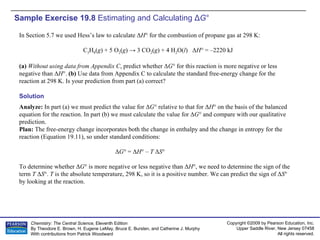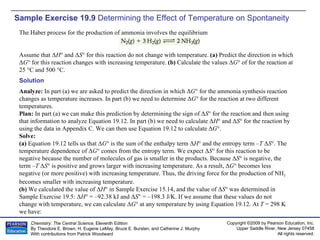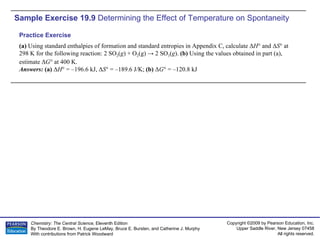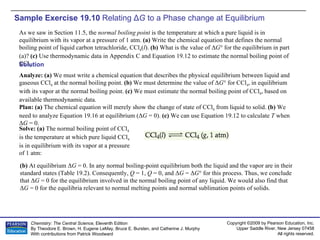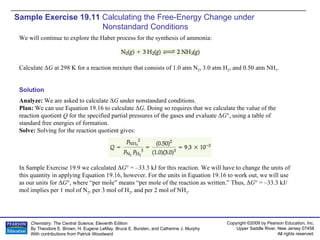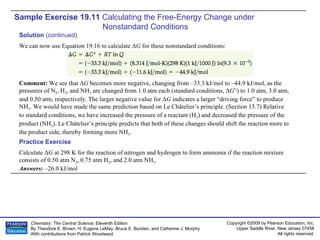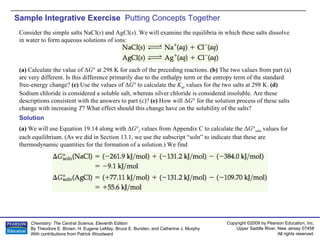The document provides examples of calculating thermodynamic properties such as entropy change (ΔS) and standard free energy change (ΔG°) for various chemical reactions and phase changes. It gives sample exercises that demonstrate how to use tabulated thermodynamic data and equations to determine ΔS for processes like freezing of mercury and condensation of ethanol. Other examples show how to predict the sign of ΔS and calculate ΔG° from standard enthalpy (ΔH°) and entropy (ΔS°) values.
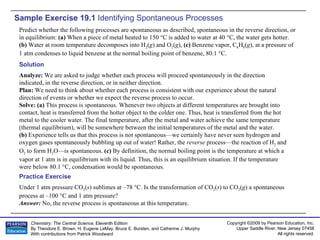

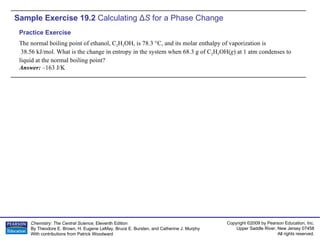
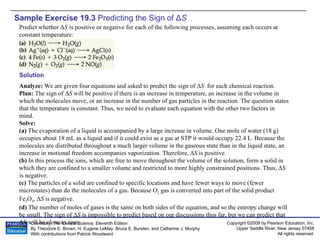


![Sample Exercise 19.5 Calculating Δ S from Tabulated Entropies Calculate Δ S º for the synthesis of ammonia from N 2 ( g ) and H 2 ( g ) at 298 K: N 2 ( g ) + 3 H 2 ( g ) -> 2 NH 3 ( g ) Using the standard entropies in Appendix C, calculate the standard entropy change, Δ S °, for the following reaction at 298 K: Al 2 O 3 ( s ) + 3 H 2 ( g ) -> 2 Al( s ) + 3 H 2 O( g ) Answers: 180.39 J/K Practice Exercise Solution Analyze: We are asked to calculate the entropy change for the synthesis of NH 3 ( g ) from its constituent elements. Plan: We can make this calculation using Equation 19.8 and the standard molar entropy values for the reactants and the products that are given in Table 19.2 and in Appendix C. Solve: Using Equation 19.8, we have Substituting the appropriate S ° values from Table 19.2 yields Δ S ° = 2 S °(NH 3 ) - [ S °(N 2 ) + 3 S °(H 2 )] Δ S ° = (2 mol)(192.5 J/mol-K) - [(1 mol)(191.5 J/mol-K) + (3 mol)(130.6 J/mol-K)] = -198.3 J/K Check: The value for Δ S ° is negative, in agreement with our qualitative prediction based on the decrease in the number of molecules of gas during the reaction.](https://image.slidesharecdn.com/ch19sampleexercise-100607180959-phpapp01/85/AP-Chemistry-Chapter-19-Sample-Exercises-7-320.jpg)



